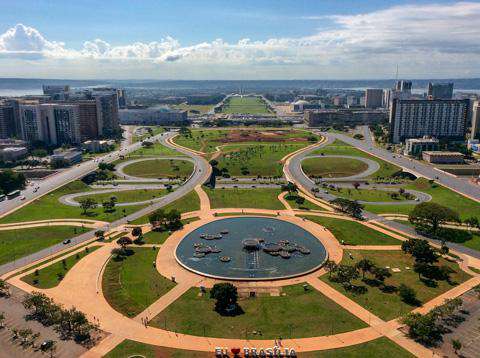Traveling in Brasilia
 Brasilia, Brazil
Brasilia, Brazil
The capital city of Brazil, Brasilia is a uniquely-planned city that was constructed in four years from 1956-1960 in the shape of a large bird or airplane. Renowned for its modern architecture, the city listed as a World Heritage Site by UNESCO and attracts architecture aficionados worldwide.
Neighborhoods & Around
The city is designed in the shape of a giant bird or airplane, with various separated zones assigned for specific functions such as housing, commerce, hospitals, and banking. The Eixo Monumental (or "Monumental Axis") runs down the center of the city between the two "wings," with government buildings stationed at the end. The Monumental Axis divides the city into north and south sectors. The zones are usually referred to by acronyms; those ending in N refer to sectors on the northern side of the axis, while those ending in S are on the south. The city is divided as follows:
SHS/SHN - Hotel sectors (Setor Hoteleiro)
SCS/SCN - Commercial sectors (Setor Comercial)
SQS/SQN - Residential sectors (Superquadras)
CLS/CLN (or SCLS/SCLN) - Local commerce sectors (Comercio Local) along the wings.
SES/SEN - Embassies sector (Setor de Embaixadas)
The arched "wings" of the city are mainly residential zones, with several rows of medium-rise apartment blocks and several small commercial districts. The intersection is the commercial and cultural hub, with stores, hotels, museums, and the Cathedral of Brasilia. The "nose" of the city faces Paranoa Lake.

 Budget Your Trip is all about finding out how much everything costs so that you can travel cheaper and longer. Created by avid travelers Laurie and Bryan, our goal is to help you plan your next trip on the right budget. With average daily travel costs that are calculated from the budgets of real travelers, plus an analysis of hotel and tour prices, you can find out how much money you need to plan your next adventure. We also have plenty of travel advice, accommodation reviews, and activity suggestions.
Budget Your Trip is all about finding out how much everything costs so that you can travel cheaper and longer. Created by avid travelers Laurie and Bryan, our goal is to help you plan your next trip on the right budget. With average daily travel costs that are calculated from the budgets of real travelers, plus an analysis of hotel and tour prices, you can find out how much money you need to plan your next adventure. We also have plenty of travel advice, accommodation reviews, and activity suggestions.